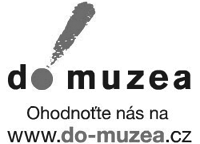Slezský sborník
rok 2012
ročník 110
číslo 1–2
Obsah / Contents
Studie / Articles (s. 5–90)
Petr Kreuz – Zuzana Haraštová: Nejmladší popravená evropská čarodějnice? K otázce dětských obětí ve slezských čarodějnických procesech z let 1651–1652
s. 5–26
The youngest executed European witch? To the issue of children victims in Silesian witch trials in 1651–1652
The study aims to describe the origin and opinion tradition of alleged executions of young children from 9 months to 15 years of age in high season of Nysa witch trials from 1651–1652. It goes from a thorough source analysis and interpretation review that emerged from the first half of the 19th century. It also tries to set the issue into a wider, European context.
Key Words: Witch trials, children’s witch trials, historiography, Duchy of Nysa, regional history
Lumír Dokoupil – Ludmila Nesládková – Radek Lipovski: Populační vývoj statutárních měst rakouské části Slezska v období demografického přechodu – města Opava, Frýdek a Bílsko
s. 27–46
Population development of statutory towns in the Austrian part of Silesia in the period of demographic transformation – towns Opava, Frýdek, and Bielsko
Population development of statutory towns Opava, Frýdek, and Bielsko is watched from the point of reproduction processes and territorial motion of the inhabitants. The natural and mechanic change of population is examined at the turn of the 20th century, i.e. in the period of demographic transformation, during which many significant reproduction changes of the population happened, and in the period of industrialization that encouraged the inhabitants to migrate. The impact of industrial and demographic revolutions on the inhabitants of towns is being established in connection with economic and cultural aspects that could have had an influence on the different development in particular towns.
Key Words: historic demography, demographic transformation, population development, history of towns, Silesia, Opava, Frýdek, Bielsko
Lubomír Nenička: Změny politického života a nové tendence hospodářského vývoje na Ostravsku v pomnichovské éře
s. 47–62
Changes in political life and new tendencies of economic development in Ostrava region in the period following the Munich Agreement
This study deals with the new tendencies of economic policy in the post-Munich Czechoslovakia. The article focuses on some important changes of economic development of the Second Republic and this changes are described and analysed by the example of the specific region. The particular attention is paid to developement of trade unions. Their unification of trade unions was also the indication of new tendencies in the Czechoslovakian economy.
Key Words: Economic policy, trade unions, national egosim, liberalism, collectivism
Aleš Binar – Zdeněk Jirásek: Slezsko v československo-polských vztazích v letech 1945 až 1947
s. 63–90
Silesia in Czechoslovak-Polish Relations 1945–1947
The last diplomatic controversy over Silesia between Czechoslovakia and Poland took place in years 1945 to 1947. The aim of this paper is to recognize and analyze this political struggle. This study consists of three parts, i. e. chapters. In the first part there are analyzed diplomatic negotiations between Czechoslovakia and Poland from June 1945, when the issue of Silesia emerged for the first time, to March 1947, when the Treaty of Friendship and Mutual Support was concluded. Second part deals with public opinion and policy of public institutions towards Silesia. Third part, the conclusion, tries to synthesize both above mentioned approaches and to find out correspondences and differences. In history of Czechoslovak-Polish relations was a period of June 1945 the most complicated and possibility of military clash become real. But after middle of 1946 mutual relations become more consolidated and international and internal situation led to conclusion of above mentioned treaty. But it meant that both states resign the territorial aspirations. Quite different situation was in public opinion, wishes for restitution of Silesia in as greatest extension as possible existed long before the outbreak of this dispute and remained after 1947.
Key Words: Silesia, Czechoslovak-Polish relations, 1945-1947, Czechoslovakia, Poland, territorial pretensions
MATERIÁLY / MATERIALS (s. 91–104)
David PAPAJÍK: Několik problémů z dějin města Ostravy v 15. století a pokus o jejich řešení
s. 91–104
Several problems from the 15th century history of Ostrava and an attempt to solve them
In the text the author displaces, corrects, and adds some facts common in historiography concerning the 15th century history of Ostrava on the basis of thorough source analysis (the issue of dating of the conquest of Moravian Ostrava by Hussite commander Jan Čapek of Sány, the manner of his conquest of the town Moravian Ostrava, the issue of dating of Čapek’s conquest of Polish Ostrava, some aspects of Čapek’s economic activity in Moravian Ostrava, and the issue of Čapek’s alleged wife Hedvika of Petřvald).
Key Words: town Ostrava, Moravia, Silesia, Jan Čapek of Sány, 15th century
Přehledy bádání / Research overviews (s. 105–111)
Recenze / Reviews (s. 112–133)
Zprávy o literatuře / Brief Notices (s. 134–152)
Kronika / Chronicle (s. 153–157)
Bibliografická příloha / Bibliography (s. 158–159)
Poslední aktualizace článku: 06.10.2015
Vytisknout celý článek







